Estimation Teaching Resources
Are you teaching estimation in your math classes? Make approximating easy with educational resources designed to help kids learn how to estimate and when to use these reasonable calculations.
With worksheets and activities aligned with TEKS and Common Core math, this collection has everything math teachers need to build their lesson plans on estimating this school year. Help students understand the magnitude of numbers and prepare them for real-world estimating needs — from budgeting their shopping to estimating calculations when planning.
Do you need a refresher on estimation or some quick tips on teaching kids to estimate? Read on for a primer from our teacher team, including a look at the difference between estimating and rounding, what it means to approximate and more!
What Is Estimation in Math? A Kid-Friendly Definition
We like to start with simple definitions of core concepts to provide our fellow teachers with a script starter for their lessons. So here's a way to explain the meaning of estimation to your math class:
Estimation is making an educated guess or approximation of a quantity or value. This math skill lets us make quick calculations so we can understand the amount or size of something without using exact numbers.
When we are estimating numbers, we aren't looking for an exact answer! We are looking for a number that is close to the exact answer — a "good enough" answer.
How to Estimate in Math — Different Estimation Strategies
Students tend to learn how to round numbers in second or third grade, which sets the stage for learning to estimate. After all, rounding numbers is one of the skills that students (and grown-ups!) use to estimate in math.
Here are the more common methods we teach our students:
Estimating With Rounding
To estimate by rounding, you'll need to round your numbers to a given place or whole number. This will give you simple whole numbers that can then be added to estimate a sum, subtracted to estimate a difference and so on.
This process also works for estimating quotients and products.
Estimating With Benchmarks
If you are working with decimals or fractions, you may want to apply benchmark estimation. This estimating strategy makes use of common fractions such as 1/4 or 1/2 or common decimals such as .5 or .75, which are considered "benchmarks" that students can round their given number to.
This simplifies the numbers at hand and makes it easier to then subtract or add.
For example, if a student has the fraction 7/8, they can compare it against the benchmarks 3/4 and 1, determining which benchmark it's greater than and which it is less than.
Estimating With Compatible Numbers
Compatible numbers are student favorites because it's easy to use mental math to add, multiply, divide and subtract them. For example, numbers that end in 5 or 0 are compatible numbers because they're fairly simple to work with when doing whole number operations. We often refer to compatible numbers as "friendly numbers."
Rounding a number to a compatible number simplifies the problem and makes estimation easier!
Estimation Examples in Real Life
We all have those students who like to ask why they have to learn a particular concept, and with estimation that question comes frequently. After all, estimating isn't providing the exact answer, so why is it valuable?
Your students may not even realize just how many useful applications this skill has, so let's take a look at a few ways to estimate in real life.
- Estimating the cost of your items when shopping is an easy way to determine if you have enough money to cover the bill. You do not need to know the exact total price in this case. You only need to know that the amount of money you have exceeds the total cost of the items.
- Estimating the amount of a certain item you need makes it easy to ensure you're creating or purchasing enough. For example, if you are throwing a party, you may estimate how many cupcakes you will need to bake based on the number of people you expect to attend. You do not need to know exactly how many cupcakes, but it helps to have an approximate number.
- Estimating the length of a table is an easy way to assess the number of people who can be seated at the table. It is also useful to estimate the size of items when you want to know if they will be able to fit through a particular doorway or window.
- Plus Plan
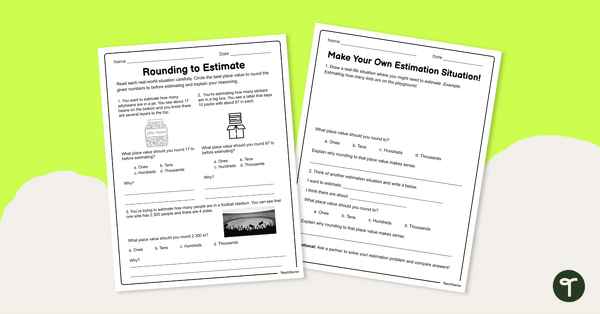
Rounding to Estimate Worksheet Set
Use our rounding to estimate worksheet set to sharpen number sense and mental math skills.
- Plus Plan
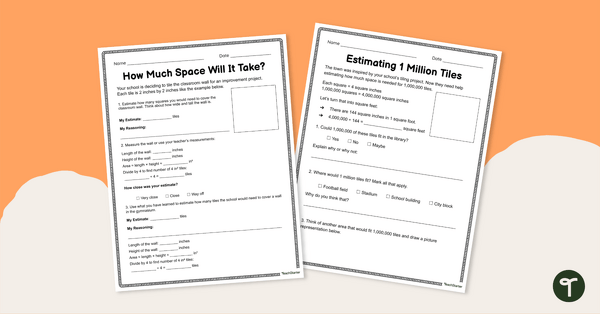
Estimation Activity: Estimating Space Worksheet Set
Use this estimation activity to give your students practice estimating space, converting measurements, and problem solving.
- Plus Plan
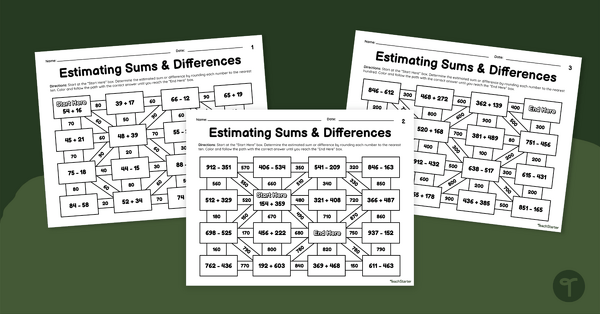
Estimating Sums & Differences – 3rd Grade Math Mazes
Sharpen your students’ rounding and estimation skills with a set of 3rd grade math mazes.
- Plus Plan
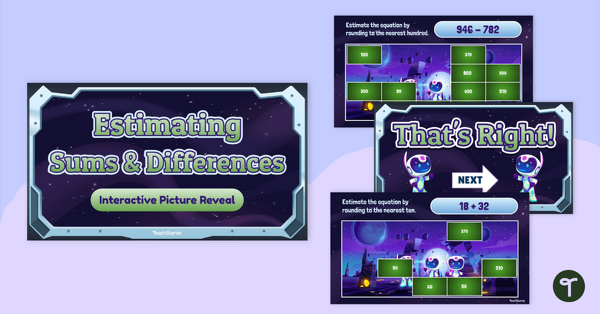
Estimating Sums & Differences Interactive Picture Reveal
Send your students on an intergalactic math adventure while practicing how to estimate sums and differences of whole numbers.
- Plus Plan
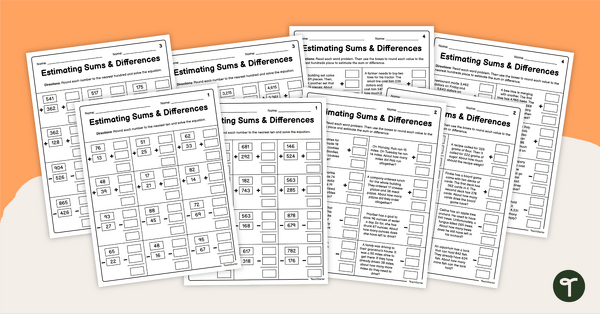
Estimation Worksheets (Addition and Subtraction)
Teach your students how to use their rounding skills to estimate sums and differences with this math worksheet.
- Plus Plan
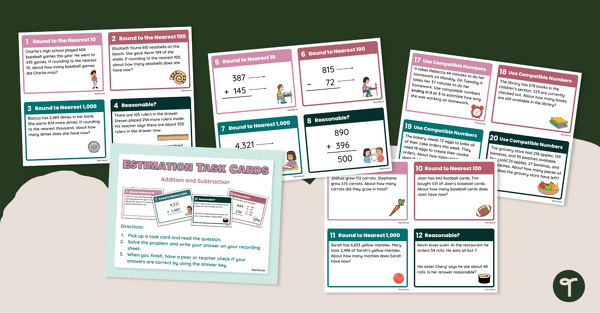
Estimation With Addition and Subtraction Task Cards
Supercharge your students’ math skills with this set of task cards designed to help them master estimating sums and differences of whole numbers using rounding and compatible numbers.
- Plus Plan

Estimation With Multiplication (Whole Numbers) Task Cards
Supercharge your students’ math skills! Download our set of fun task cards to practice estimating products of whole numbers.
- Plus Plan
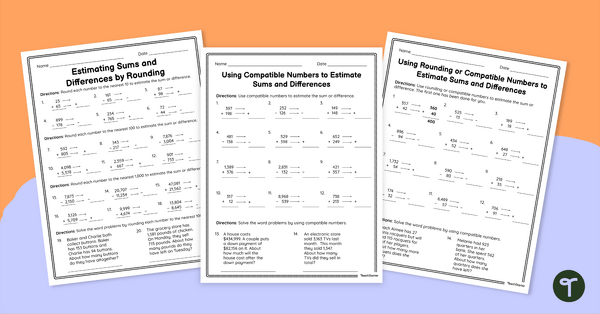
Estimating Sums and Differences by Rounding and Compatible Numbers – Worksheet Set
Supercharge your students’ math skills with our estimation worksheets! Download now to master the art of rounding and using compatible numbers for lightning-fast calculations.
- Plus Plan
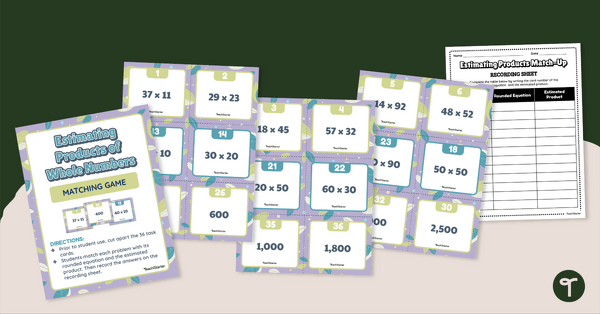
Estimating Products of Whole Numbers Matching Game
Guide your students to round the factors to estimate the product with this matching game designed for 4th and 5th-grade students.
- Plus Plan
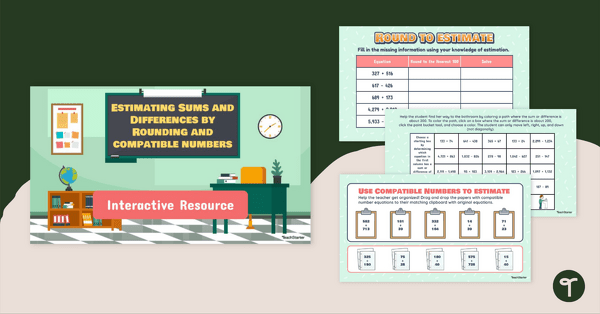
Estimating Sums and Differences Interactive Activity
Download our interactive Google Slides activity designed to sharpen your students’ understanding of estimating sums and differences with rounding and compatible numbers.
- Plus Plan
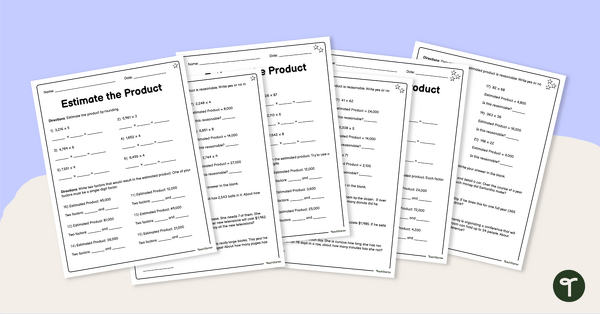
Estimate the Product – Differentiated Worksheets
Guide your students to estimate products of whole numbers with this set of differentiated worksheets.
- Plus Plan
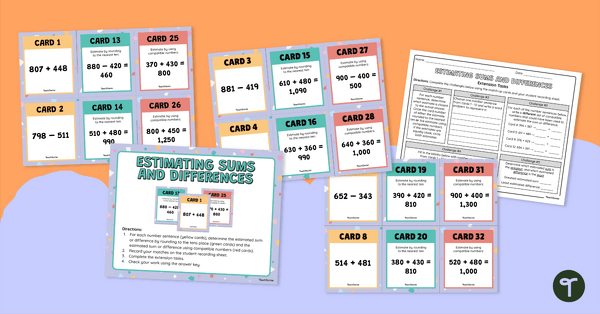
Estimating Sums and Differences Matching Activity and Extension Task
Guide your students to estimate addition and subtraction sentences by rounding and compatible numbers with this matching activity.
- Plus Plan
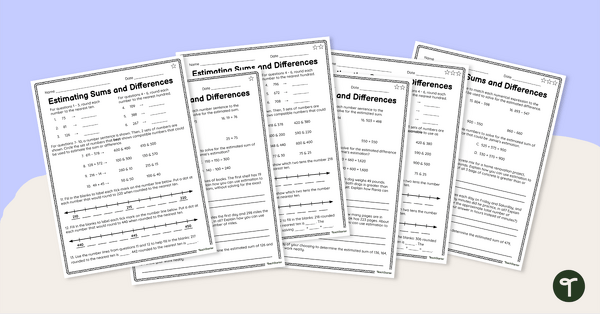
Estimating Sums and Differences Differentiated Worksheets
Teach your students how to round and use compatible numbers to estimate sums and differences with this set of differentiated worksheets.
- Plus Plan
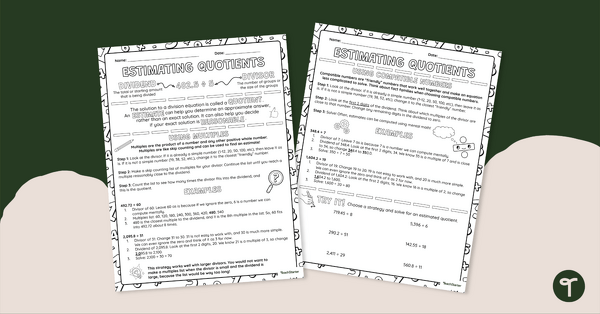
Estimating Quotients Doodle Notes for 5th Grade
Engage your 5th-grade students with this set of doodle notes when teaching them how to estimate quotients.
- Plus Plan
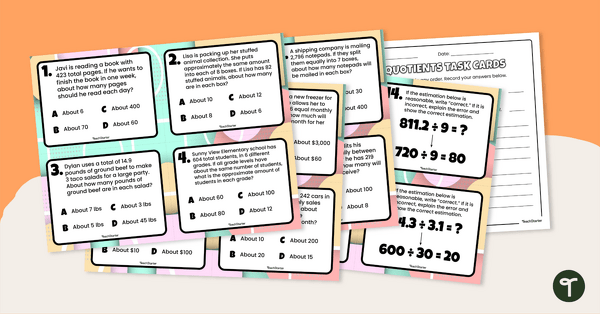
Estimating Quotients Task Cards for 5th Grade
Give your 5th-grade students the opportunity to use rounding and compatible numbers to answer estimation questions with this set of 24 task cards.
- Plus Plan
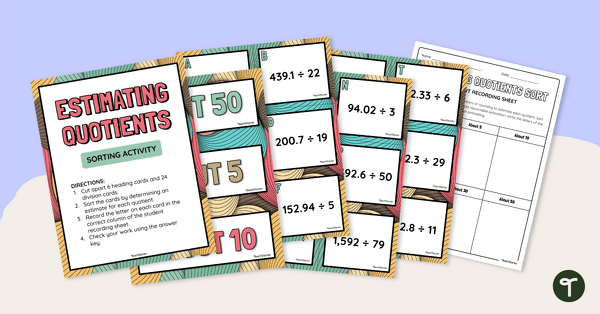
Estimating Quotients Sorting Activity for 5th Grade
Guide your students to use rounding and compatible numbers when estimating quotients with this 24-card sorting activity.